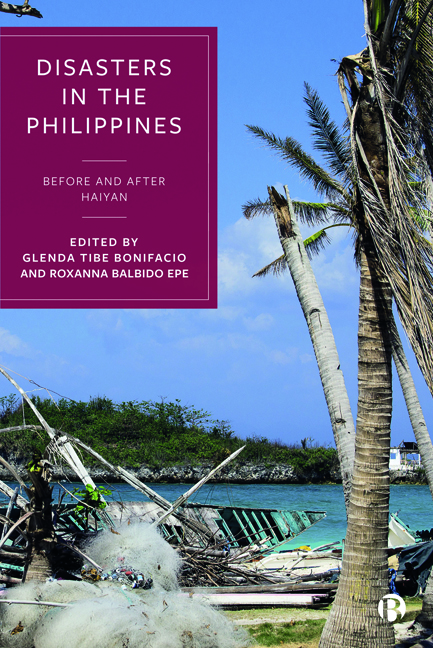11 - No One Left Behind? A Case for Disability-Inclusive Disaster Risk Reduction in the Philippines
Published online by Cambridge University Press: 18 January 2024
Summary
Introduction
The Sendai Framework for Disaster Risk Reduction 2015– 2030 (United Nations 2015) that resulted from the Third UN World Conference in March 2015 articulated an important message for all participating countries, communities, and disaster risk reduction (DRR) stakeholders: no one should be left behind. Indeed, it has been a recurrent observation that disasters do not impact populations evenly (Bankoff and Hilhorst 2004; Blaikie et al 2004). Those who live in conditions of marginality are often those who suffer the most from disaster events. Yet, while this fact is established, conventional DRR practices have often excluded marginalized sectors from planning, strategizing, and implementing risk reduction measures (Peacock, Morrow, and Gladwin 1997; Peek 2008; Back, Cameron, and Tanner 2009; Bradshaw and Fordham 2013; Seager 2014).
In many cases, persons with disabilities are “the first to be forgotten, and the last to be remembered” (UNOCHR 2014), even from among the most marginalized groups. Recent examinations of disaster experiences all over the world— the Indian Ocean tsunami of 2004, hurricane Katrina of 2005, the Haiti earthquake of 2010, and the Great East Japan earthquake and tsunami of 2011, among others— have brought attention not only to how persons with disabilities are differentially affected by calamities but also how they are largely neglected and excluded in disaster risk management planning and programming (Suprobo 2011; Robinson and Kani 2014; Stough and Kang2015). This invisibility has led to the further marginalization of persons with disabilities, which contributes to placing them at higher risk of injury, death, and loss of property during disasters (Twigg, Kett, and Lovell 2018).
A pioneering global study conducted by UNISDR (2014, 13) that looked into the intersection of disaster and disability revealed that 80% of persons with disabilities are unable to evacuate immediately without difficulty in the event of a sudden disaster, while 72% do not have personal preparedness plans, thus making it more likely for them to be left behind in the event of a calamity. Yet, the same study also shows that, if given sufficient time, the number of persons with disabilities who could evacuate without difficulty doubles.
- Type
- Chapter
- Information
- Disasters in the PhilippinesBefore and After Haiyan, pp. 220 - 247Publisher: Bristol University PressPrint publication year: 2023



